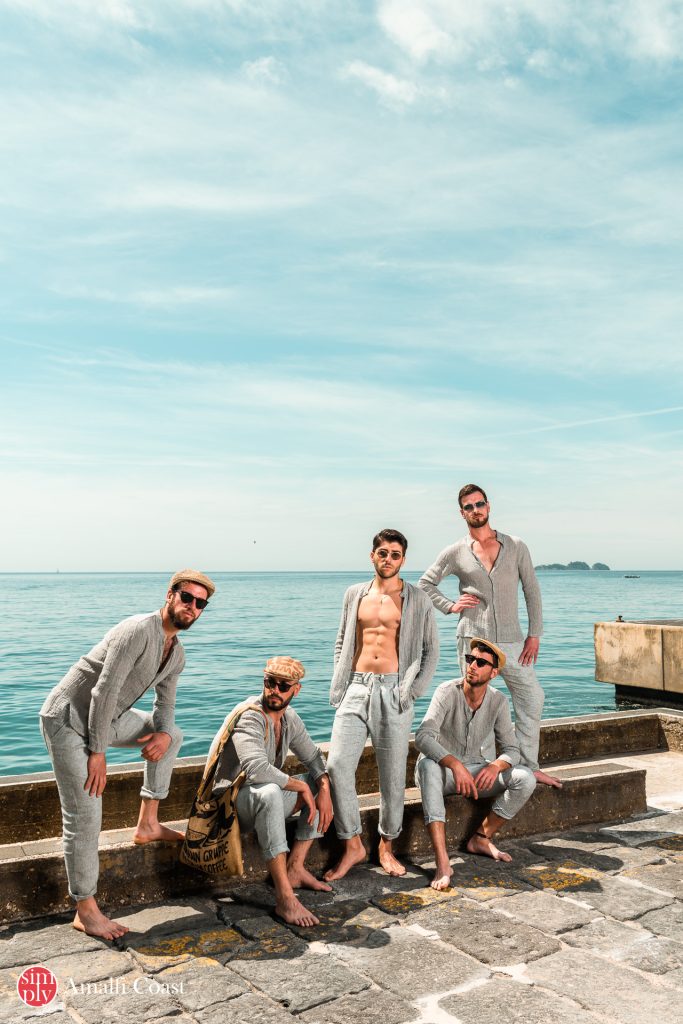Positano, a glamorous town that never goes unnoticed by its guests, whose beauty is known and appreciated worldwide, just like its Beachwear Fashion!
A fashion that since the 1950s has captivated vip, locals, and coastal visitors, creating a style that blends elegance, versatility, and a healthy touch of creativity!
A style, therefore, created in Positano to be worn in Positano, reflecting its nature and its characters.
But now you’re probably wondering, how did this glamour myth originate?
Positano was already famous in the 19th century for weaving jute fabrics, locally known as “pezza“, which women were accustomed to dyeing at home with vibrant colors.
This is the image that appeared before the eyes of the english writer and painter John Ruskin, who described the girls of Positano as confident women with a proud gaze, wearing “a diagonally placed handkerchief on the chest in a vivid color, an open bodice, short skirts, and sandals on their feet“.
After World War II, with the changing tourism landscape, the vertical city became one of the most coveted destinations of the jet set, and some designers decided to embark on the emerging path of “Bikini”, crafted here in crochet, patchwork fabrics, and appliqués.
Subsequently, they found themselves responding to the needs of an audience seeking a complete outfit for their beach holidays, a public comprised of a truly vast range of personalities but with a single common goal:
to feel unique and original!
This is how Positano boutiques began to emerge, creating what the Milanese fashion world would ironically call the “Positano rags”.
Accompanying the changing trends, Positano fashion expanded its production, creating wide and soft dresses, long lace skirts, oversized shirts and swimwear covers, and for men, fresh and elegant linen suits. Even the prints have been renewed over time, and in this regard, the birth of “tinta in capo” (garment dyed)” should be highlighted – the method of dyeing clothes after their complete manufacturing.
Today, Positano fashion collections follow three main “style”: on one side, its colorful “Mediterranean” patterns with majolica, lemons, and marine elements decorations; on the other, the elegance of solid colors on linen and gauze, particularly in natural colors like raw, cream, and sand; finally, the preciousness and sensuality of sangallo, macramé and laces on elegant black or white dresses, often caught by future brides who wish to be in perfect Positano style for their big day!
Photos by: Vito Fusco Studio | Follow on instagram: @vitofuscostudio
 Simply Amalfi Coast
Simply Amalfi Coast 







